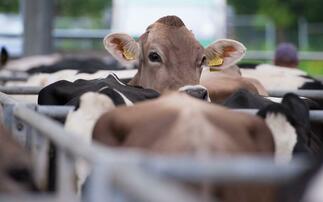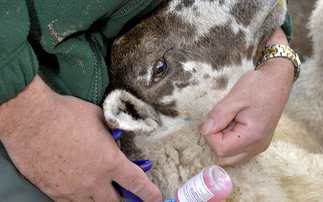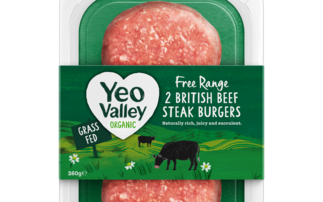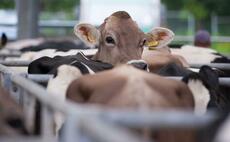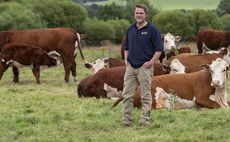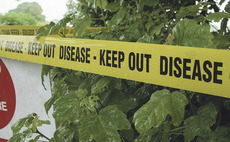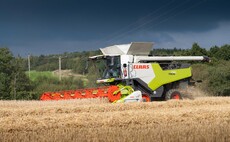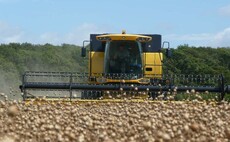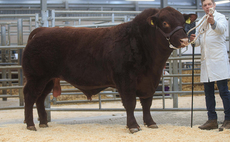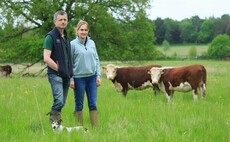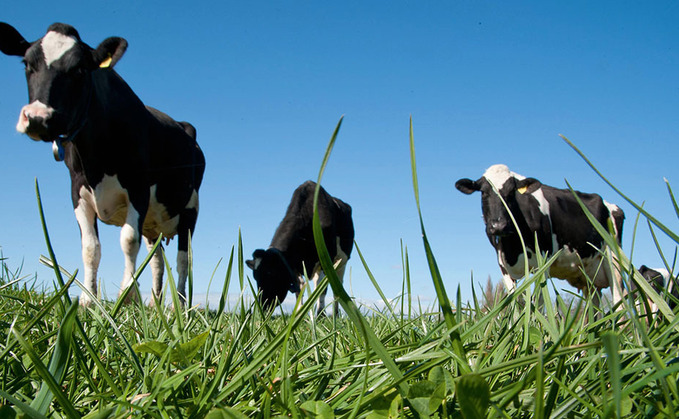
One of the sessions at the event's Innovation Hub will look at ‘revolutionary research'. Here, we ask the session's three speakers for an overview of what they will be presenting.
Increasing N use efficiency in dairy systems - Reading University
Research into how dairy cow management and feeding regimes may adapt to deliver requirements of the future forms the basis of research work at the centre for dairy research at Reading University.
Chris Reynolds, professor of animal and dairy science at the university, will discuss some of the centre's ongoing projects.
These include an investigation into the potential benefits of multi-species swards as an alternative to monoculture ryegrass swards, alongside another looking at the long-term effects of feeding lower protein diets to dairy cows.
Compositions
Speaking about the former, Prof Reynolds explains that a series of forages with different compositions have been established.
He says: "Compositions have included legumes as core species in the diverse mixtures, which are important as they can fix nitrogen from the atmosphere and remove the need to use as much nitrogen fertiliser.
"Forbs, such as plantain and chicory, in the multi-species mixture are also good feed for dairy cows and have certain anthelmintic properties which could be useful in reducing requirements for anthelmintic drugs in the future.
"A number of multi-species swards also have deep-rooting characteristics, which can be useful in benefiting the soil structure, as well as extracting nutrients from lower down in the soil."
Some of the key messages from a six-year Defra-funded study, led by the University of Reading, on protein utilisation in lactating dairy cows, will also be presented by Prof Reynolds.
He explains: "We know that in the future, there will be increasing pressures on reducing the amount of protein we feed our cows.
"The study looked at what the long-term implications of those lower protein diets might be, both positive and negative."
Dairy research Newcastle University
With the dairy research facilities at Newcastle University currently undergoing extensive restructuring, Hannah Davies, PhD student at the university, will use her slot to outline some of the new research set to get underway at this site.
Ms Davies will update the audience on some of the features of the new facility, which houses a 300-head Holstein Friesian herd, split into an autumn-calving group and a spring calving grass-fed group.
This is designed to provide an even milk profile as well as separate cohorts for research, providing more opportunities for students.
Grazing strategy
A new grazing strategy is underway, which will roughly see a 28-day rotation established, although not within fixed paddocks.
This has also been designed to provide more research opportunities for students, providing potential for studies into grazing platforms and precision grazing, looking at sequestration, carbon capture and environmental impact.
Ms Davies will also present recent findings from a study into nutritional differences in milk fat composition from different management systems, with emphasis on the relevance of this research to UK dairying.
Other dairy research at the university includes the use of novel technologies for the development of diagnostic tools to enhance cattle health and welfare, and feeding strategies for the rearing of dairy calves.
Research is also being done to identify cost-effective and efficient ways to detect lameness using sensor technologies.
Drivers of efficiency on UK dairy farms University of Nottingham
Drivers of efficiency on UK dairy farms - University of Nottingham
A classification tool for dairy farmers to measure feed efficiency on their own farms could be available in the not too distant future.
This is the end-goal of a five-year project looking into whole-farm feed efficiency on different types of dairy systems as part of a partnership between the University of Nottingham and AHDB Dairy.
Prof Phil Garnsworthy, from the University of Nottingham, will be presenting the latest findings from the five-year study, which is now in its fourth year.
Feed conversion efficiency (FCE) is usually considered only for the milking cows in a herd, but feed is also consumed by non-milking animals.
Researchers are therefore investigating FCE at whole-farm level.
Study
A total of 21 dairy farms across the UK are involved in the project, ranging from all-year housed to grazing-based systems. Each provide quarterly data updates on figures, including feed used and milk production, which is then translated into an efficiency figure for the whole farm.
Prof Garnsworthy says: "Efficiency is driven mostly by milk production per hectare of land, but this is affected by external factors, such as grazing management and silage quality, and feed efficiency generally increases with increasing milk yield.
"Within systems, we always expected replacement rate would have a big impact on efficiency, but this is marginal between systems because higher yielding herds tend to have a higher replacement rate.
Prof Garnsworthy explains: "Last year, I reported the average performance for the different categories, and we are now at the stage of looking at where improvements could be made in each farming system by considering the impact of various changes on whole-farm feed efficiency."
Goal
The end goal is to produce a tool into which farmers can input their data.
"The idea is the tool will be a decision support system to highlight to farmers what the biggest driver of whole farm feed efficiency is on their farms and where changes could be made to bring the most desired improvements."
The tool will set up key performance indicators for whole farm feed efficiency in five categories of a production system.
Íæż½ã½ã will be able to benchmark the results with the system potential and similar farms, and consider which practices would be worthwhile to look into to make improvements.









